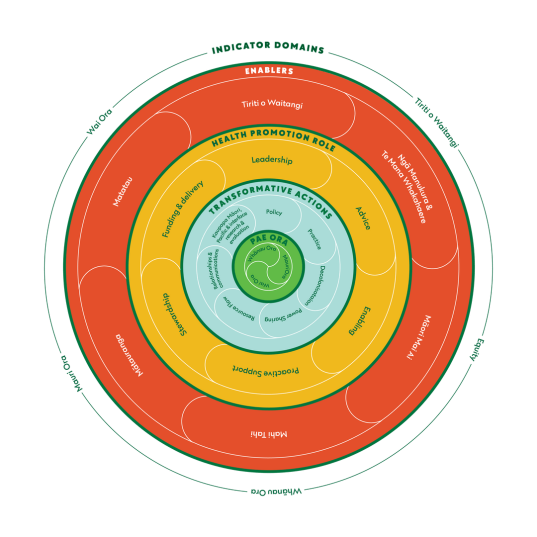Takoha case study: Te Ara Pounamu
This case study explores new ways of working for the Crown agency then known as Te Hiringa Hauora | Health Promotion Agency (now part of Te Whatu Ora – Health New Zealand) as it journeyed towards being a Tiriti-dynamic organisation.
This particular example is explored through the establishment of a national population health hui called Te Ara Pounamu in 2020. The case study demonstrates how the Takoha enablers of Māori Mai Ai, Mahi Tahi, Ngā Manukura and Te Mana Whakahaere, Matatau, and the articles of Te Tiriti o Waitangi can be put into practice in a tangible, real-world way.
Te Ara Pounamu 2020
In November 2020, Te Hiringa Hauora hosted an online population health national hui called Te Ara Pounamu. The aim of the hui was to show leadership and create a platform for the public health sector to connect, kōrero and explore opportunities to work together. Te Ara Pounamu continued into 2022.
Te Ara Pounamu brought together public health leaders and people with an interest in population health to reflect on the proposed health system changes, challenges and opportunities. It centred on resetting the focus of, and building a stronger case for public and population health in Aotearoa.
Key themes explored during the hui include:
- Hauora Māori and Te Tiriti
- Population Health and Sustainability
- Communities and Equity
With more than 500 attendees across Aotearoa and Australia, this hui connected the sector during a period of system reform.
Aspects of implementing Takoha
Placing Te Tiriti at the forefront of thinking right from hui planning
This included opening and closing the hui according to tikanga Māori, and intentionally selecting speakers who had connections with Māori and Pacific communities. This is an example of how the articles of Te Tiriti o Waitangi were applied.
Collaborating across the sector
The hui demonstrated Mahi Tahi in practice by bringing together key leaders from across the sector and creating strategic partnerships and collaboration. A steering group, which included representation from key sector players, was established to provide guidance to the delivery team from planning to execution of the hui. The diversity of members of the steering group enabled the hui to host a range of high profile speakers from different parts of the sector, such as the Ministry of Health, and the Department of Prime Minister and Cabinet’s Transition Unit.
Highlighting communities and their initiatives
Opening up the hui to anyone who was interested in public health and health promotion created an opportunity for communities to have access to and interact directly with key leaders in the sector and have their voices heard.
The project team intentionally looked for and showcased smaller scale community initiatives. This is one example of how Te Hiringa Hauora has shifted to be more community-centred in its journey to be Tiriti-dynamic. Showcasing in this way embeds the enabler of Ngā Manukura and Te Mana Whakahaere into practice by showing the shifting of power to communities so they can exercise control.
Te Ara Pounamu was a catalyst in starting a conversation on Tiriti-dynamism and bring out the importance of this kaupapa
Kōrero from the hui shaped a report which outlines practical ways of how to be a Tiriti-dynamic, equitable, and sustainable health system. Tiriti-dynamic approaches continue to inform the work at Te Hiringa Hauora, such as in relationship building, recruitment, research, project planning, framework development, capacity building activities, and procurement processes.
For Te Hiringa Hauora, the hui showed the importance of building, nurturing and valuing relationships. It also showed the importance of community voices and of working with communities for greater impact and carrying those priorities into the future.
Te Ara Pounamu created a platform for a community of practice to share the journey to a more connected, equitable, and sustainable health system for Aotearoa.

